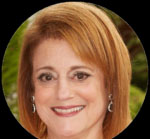Sponsored Content

By Susan Resnick, OD, FAAO, FSLS
June 3, 2020
Dry eye is a widespread challenge. A growing elderly population and greater use of digital devices mean more people coming into your office with dry-eye symptoms.
Let’s define a dry-eye patient as one who is symptomatic, whether or not they are wearing contact lenses, and for whom we are prescribing dry-eye management on an ongoing basis. In our five-doctor practice, I personally managed about 850 dry-eye patients in 2019 who meet these criteria. The number of dry-eye patients under active treatment in our practice has grown approximately 5 percent over the past year. Annual revenues for this segment have increased by about $30,000 annually.
Refine Diagnosis
Growth in this segment of our practice is attributable to two key actions: redoubling our efforts at screening by complaint and history and performing meibomography on all patients with dry-eye symptoms or signs. To that end, we now have all patients complete a modified SPEED Questionnaire so we can quickly and efficiently identify patients on whom we need to conduct further testing. Building on our improved detection and diagnostic methods, we have continued to make our dry-eye treatment platform more robust.
Whenever possible we conduct the testing and treatment on the same day as the patient’s comprehensive exam or contact-lens progress visit. This, of course, depends on the patient’s time flexibility. We have redundancy in staffing due to cross-training, which allows us to accommodate same-day treatment.
I believe that early and ongoing management of meibomian gland dysfunction remains at the core of dry-eye management. Much like dentists perform semi-annual hygiene, gland clearance on a semi-annual basis may be something all primary eyecare providers should consider doing.
Make Essential Investments
Our most recent key investments have been the purchase of an additional Lipiscan for our second office, as well as introducing TearCare to our treatment options in both of our offices. The initial outlay for the Lipiscan was roughly $20,000 and for TearCare $3,000 for two TearCare SmartHubs with disposables at around $250 per patient.
The ROI for the Lipiscan is derived from revenues from both performing the scan and the increase in patients driven to treatment with either Lipiflow or TearCare. The break-even point for the Lipiscan was about nine months and for TearCare about one month.
Market Your Dry-Eye Services
Our most effective marketing starts in the exam room, with the doctor. Our technicians lead off with a short conversation as they are reviewing patients’ responses to the history form, but the key messaging is done during the exam by the clinician.
Our “new” dry-eye patients mainly come from our current patient base. It’s always best to “start with what you have.” Our secondary sources are patient referrals, ophthalmologist referrals and from the internet.
Get Educated: Resources for Doctors & Staff
There are several dedicated “Dry Eye Boot Camps” that are well publicized through e-blasts to optometrists. Many doctors find these helpful. Additionally, there are excellent courses at national meetings and online. I obtain my best information from peer-reviewed studies and through training by the device manufacturers and online peer forums. I am proud to currently be a member of the teaching faculty of Sight Sciences at its TearCare Academy.
We train our staff from the ground up, making sure they understand the basic biology and physiology first. They are then trained on screening, patient education, procedures and products. If done in a methodical manner with frequent review, everyone remains up to date and enthusiastic in their roles. The device manufacturers play a key role in initiating training and implementation, as well as conducting ongoing educational “lunch and learns.”
Educate Patients, Too
Our educational messaging includes a brief description of the anatomy and function of a healthy tear film, an explanation of what the patient’s individual clinical evaluation indicates and a detailed plan for treatment. Our support staff is prepared to handle all pharmaceutical prescription processing, dispense home-based care products and provide verbal and written instructions for ongoing management.
 Susan Resnick, OD, FAAO, FSLS, is president of Drs. Farkas, Kassalow, Resnick & Associates in New York City. To contact her: sresnick525@gmail.com
Susan Resnick, OD, FAAO, FSLS, is president of Drs. Farkas, Kassalow, Resnick & Associates in New York City. To contact her: sresnick525@gmail.com
3/20 06879.A

























